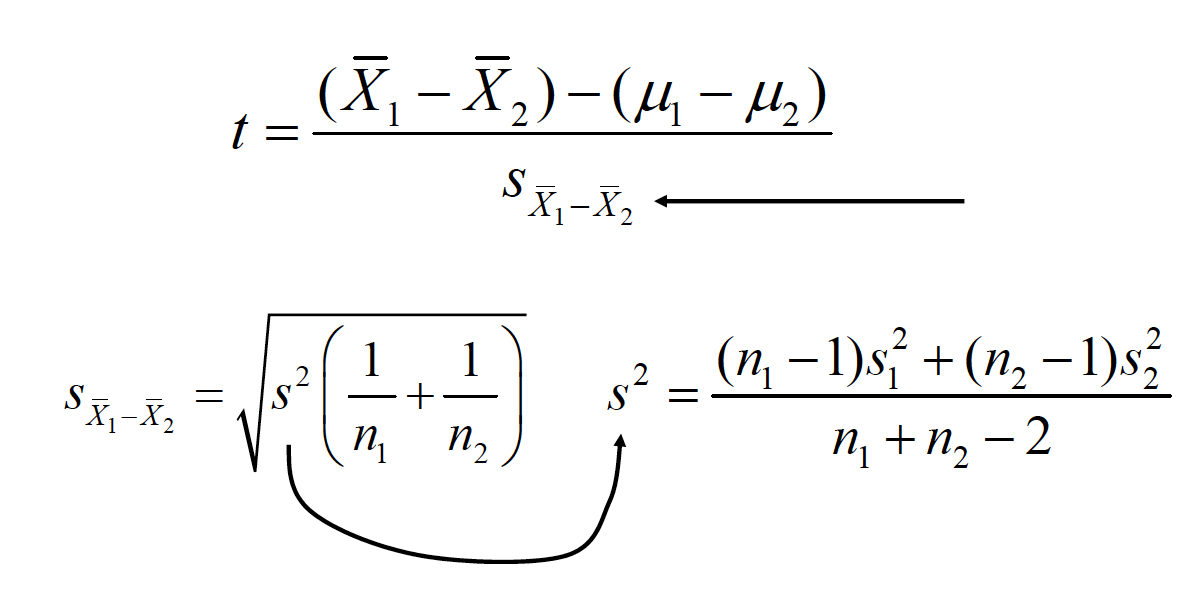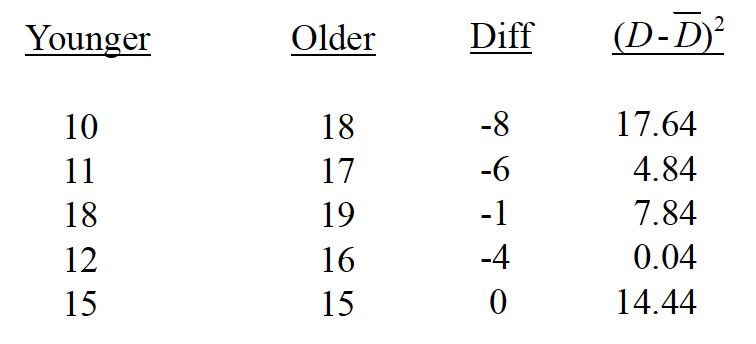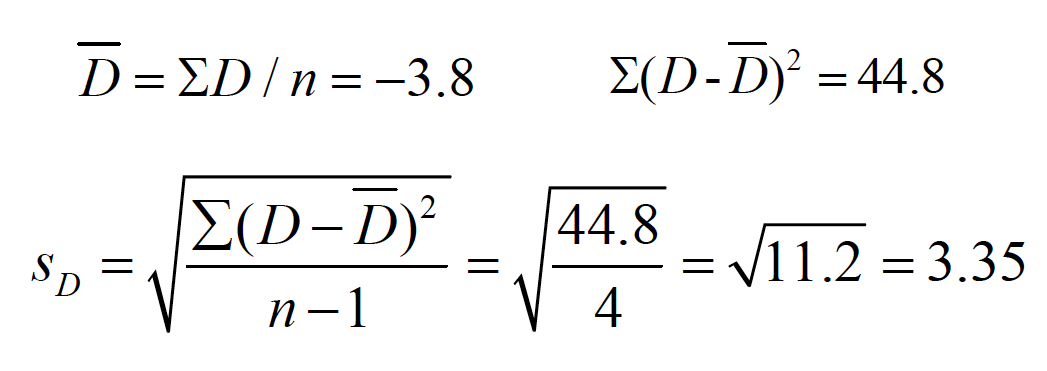Chapter 11 Matched T Test
11.1 Theory
When both sample means were produced by the same participants, we conduct what is known as a dependent-samplestest. This is a test of the average difference between the scores in one condition and the scores in another condition—thus, the unit of measurement is a difference score.
\(\bar{D}=\Sigma D /n\) \(D= X_{i1} - X_{i2}\)
The mean of this sampling distribution is \(\delta\)= 0. The shape of this sampling distribution is approximately normal. The standard error of the sampling distribution of mean difference scores is
\(s_{\bar{D}} = \frac{s_D}{\sqrt{n}}\)
\(s_d = \sqrt{\frac{\Sigma{(D-\bar{D})^2}}{n-1}}\)
The test statistic is
\(t = \frac{\bar{D}-\delta}{s_{\bar{D}}}\) \(s_\bar{D} =\frac{s_D}{\sqrt{n}}\)
The effect size is calculated
\(d =\frac{\bar{D}}{S_D}\)
\(S_d = \sqrt{\frac{\Sigma{(D-\bar{D})^2}}{n-1}}\)
You are investigating whether the older or younger male in a pair of brothers tends to be more extroverted. So you test where each one falls on an introversion-extroversion scale. The results are as follows:
Step one: State the null and alternative hypotheses
\(H_o : \delta = \mu_1 - \mu_2 = 0\) \(H_a : \delta = \mu_1 - \mu_2 != 0\)
Step two: Set the criterion for rejecting H0. Alpha is usually set to .05, but could be other values depending on the research context. Make sure you’ve considered directionality!
Step three: Select the sample and collect your data.
Step four: Locate the region of rejection and critical values.
\(t_{cv,dv=4, \alpha=.05}= +/- 2.77\)
Step five: Compute the appropriate statistic. We were never given \(\sigma\)or \(\sigma^2\), so we use the t test.

Convert me

Convert me

Convert me
\(s_D=3.55\) \(s_\bar{D} =\frac{s_D}{\sqrt{n}}= \frac{3.35}{\sqrt{5}}\)
\(t = \frac{\bar{D}-\delta}{s_\bar{D}} = \frac{-3.8-0}{1.50}= -2.53\)
Step six: Decide whether to reject H0. Is -2.53 more extreme than the critical value?
\(t_{cv,dv=4, \alpha=.05}= +/- 2.77\)
“The average extroversion value for the younger male siblings (M= 13.2) did not differ significantly from the extroversion value for the older siblings (M= 17.0), t(4) = 2.53, p> .05.”
Effect size computation
\(d = \frac{\bar{D}}{s_D}= \frac{-3.8}{3.35} = -1.13\)
Small: = 0.25Medium: = 0.50Large: = 1.0
“The average extroversion value for the younger male siblings (M= 13.2) did not differ significantly from the extroversion value for the older siblings (M= 17.0), t(4) = 2.53, p> .05, Cohen’s d= 1.13.”
So, why does the effect size calculation disagree with the result of the hypothesis test?
Template file